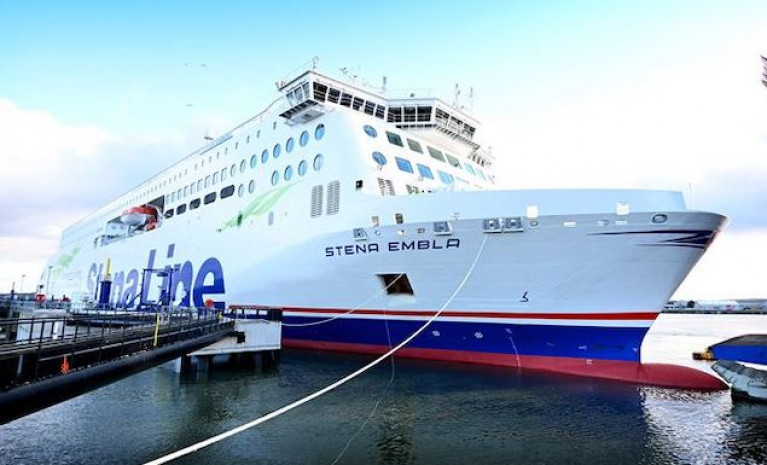Stena Line’s newest addition to its fleet, the brand-new Stena Embla ferry will make its Irish Sea debut on the Rosslare-Cherbourg service. Originally scheduled for service on the Belfast-Liverpool route, due to the current Brexit related shift for direct routes and increasing customer demand, Stena Line has decided to temporarily deploy the Stena Embla on Rosslare-Cherbourg. The first sailing will be the 20.25 hrs departure from Rosslare on Thursday 14th January 2021.
Stena Embla has the capacity to carry 3,100 freight lane meters, will increase freight capacity by 20% on the Rosslare-Cherbourg route and provide 60% more cabins for freight drivers. Stena Embla is the third E-Flexer ferry to be commissioned for Stena Line’s Irish Sea routes in the last 12 months, three of the most modern ferries in the world as part of a €400m investment.
Paul Grant, Stena Line’s Irish Sea Trade Director said: “Given the short-term market distortion, we have decided to temporarily deploy our new Stena Embla vessel on the Rosslare – Cherbourg route. Clearly, Brexit has created an increase in the demand for direct freight routes, and in particular, driver accompanied freight, so the addition of Stena Embla, whilst temporary, plus the recently introduced Stena Foreteller to the route will provide a welcome addition for our customers at this time.”
“Stena Line has always prided itself on being flexible when it comes to the efficient deployment of its fleet. Having very experienced onshore and onboard teams means that we are able to respond to market and customer demands rapidly. At present we are currently reviewing our Rosslare-Cherbourg operations and will keep engaging with our customers to identify the most appropriate Stena Line operation for the route.”
Glenn Carr, General Manager, Rosslare Europort said: “We warmly welcome Stena Embla to Rosslare for its maiden in-service voyage. We have been working closely with Stena Line to facilitate the unprecedented demand for capacity directly to and from the Continent, and the boost in capacity Stena Embla delivers has been mobilised swiftly through our close cooperation. On behalf of Irish industry and all of our customers and stakeholders, we thank Stena Line for their ongoing commitment to Rosslare Europort.”
Stena Embla will make three weekly return trips between Rosslare and Cherbourg, which alongside the Stena Foreteller will see Stena Line operate 12 crossing per week between Ireland and the Continent. Stena Line is the largest ferry operator on the Irish Sea, with the biggest fleet offering the widest choice of routes including, combined passenger and freight services from Belfast to Cairnryan and Liverpool, Dublin to Holyhead, and Rosslare to Fishguard routes, as well as a freight only route from Belfast to Heysham, a total of up to 238 weekly sailing options between Ireland and Britain.
































































